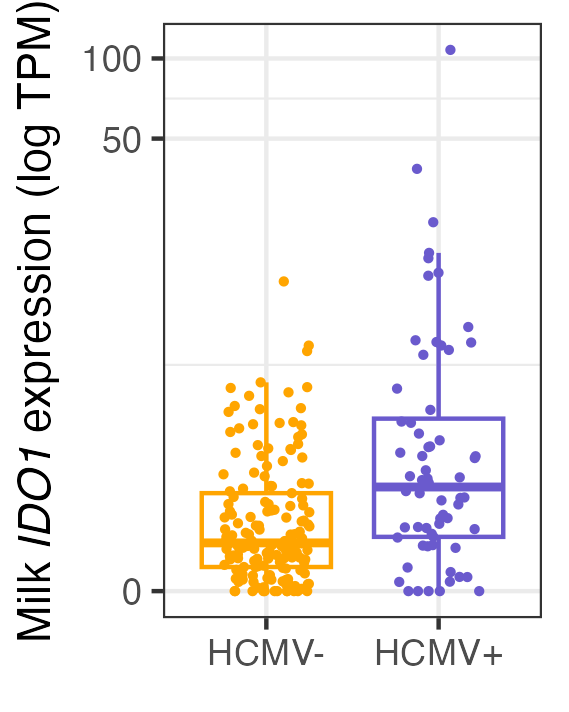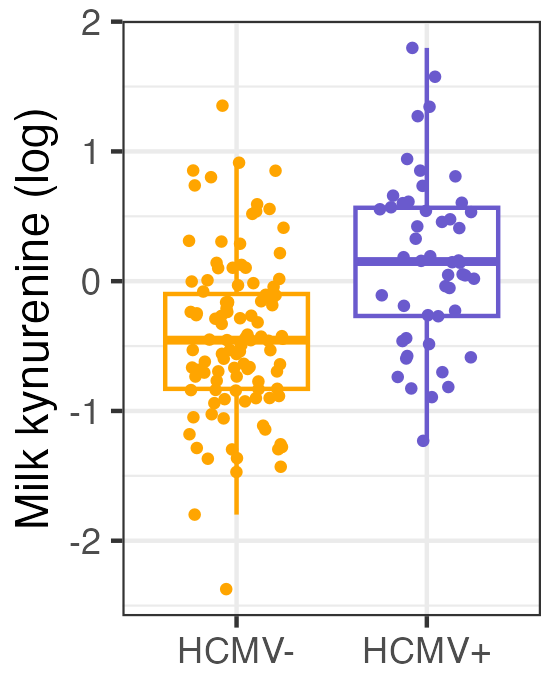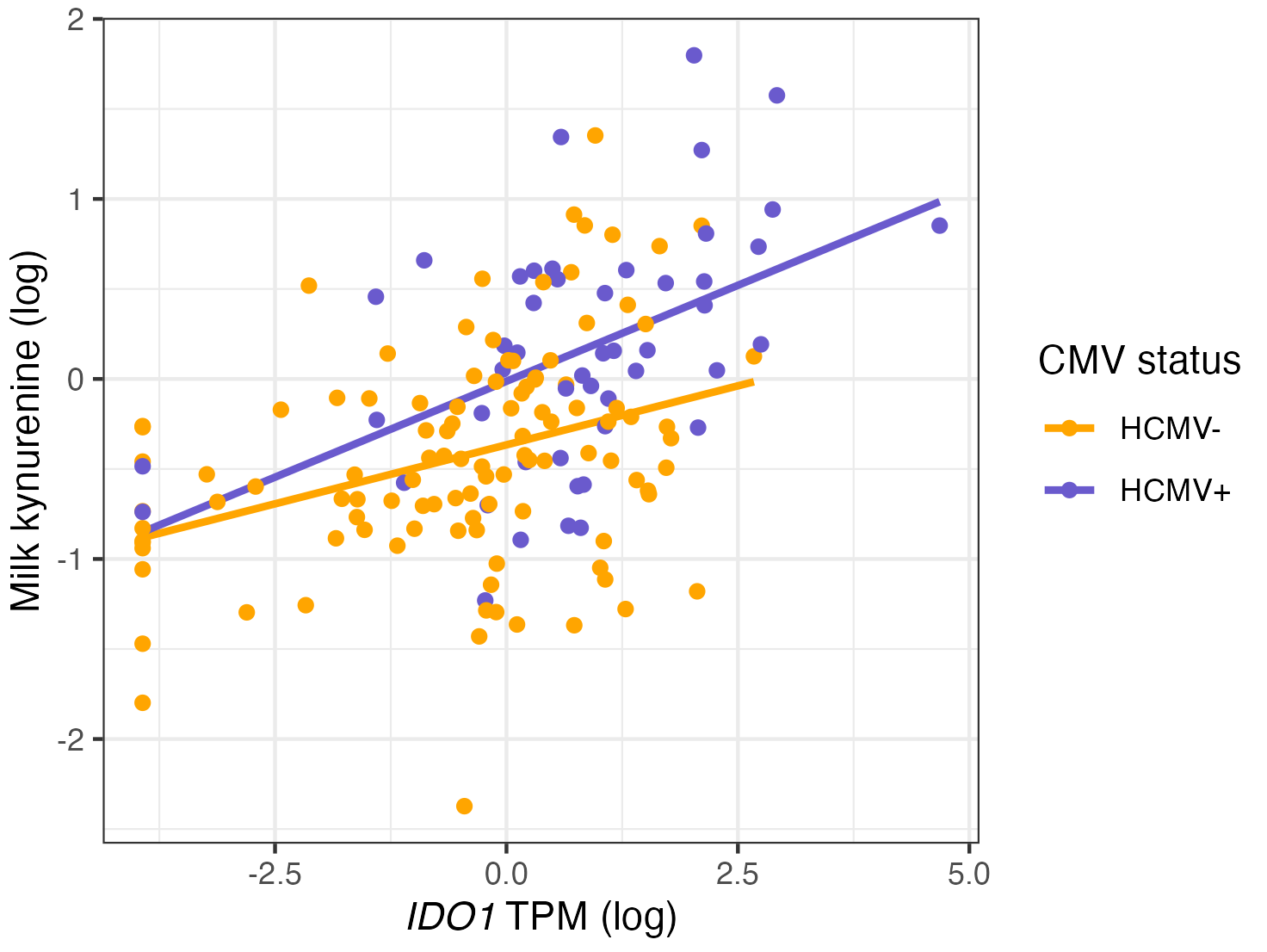Breastfeeding/Human Milk
Breastfeeding/Human Milk 3: Human Milk Bioactives and Composition
18 - Cytomegalovirus reactivation in the lactating mammary gland is associated with up-regulation of the IDO1 tryptophan/kynurenine pathway in human milk
Publication Number: 18.201
- KJ
Kelsey E. Johnson, PhD (she/her/hers)
Postdoctoral Fellow
University of Minnesota
Saint Paul, Minnesota, United States
Presenting Author(s)
Background:
Human cytomegalovirus (HCMV) has a global seroprevalence of ~85% in women of childbearing age and is almost always reactivated in the mammary gland during lactation. Despite its prevalence and clinical importance, little is known about the impact of HCMV reactivation on milk composition, and its long-term consequences for infant health.
Objective:
To identify differences in gene expression and the metabolome of human milk associated with the presence of HCMV DNA.
Design/Methods:
We sequenced DNA & RNA extracted from 1-month postpartum milk samples from exclusively breastfeeding mothers of full-term infants (N=221). For 158 of these samples, we also performed untargeted metabolomics. HCMV DNA was present in 64/221 (29%) of samples. We tested for differential expression of 16,298 genes and 458 metabolites between HCMV+ and HCMV- milk samples.
Results:
29 genes were upregulated in HCMV+ milk (false discovery rate [FDR]< 10%). These 29 genes were significantly enriched for the ‘cellular response to interferon-gamma’ gene ontology (odds ratio = 79.8, P=7.3x10-14, FDR=4.0x10-11). The IDO1 gene, which encodes the rate-limiting enzyme (IDO) of the tryptophan-to-kynurenine metabolic pathway, was upregulated (log2 fold change=2.47, P=2.3x10-14, FDR=1.8x10-10, Fig. 1). Two metabolites were differentially abundant between HCMV+ and HCMV- milk samples (FDR< 10%): kynurenine (log2 fold change=0.9, P=8.4x10-7, FDR=3.9x10-4, Fig. 2) and its metabolite kynurenic acid (log2 fold change=0.9, P=3.6x10-5, FDR=8.3x10-3). RNA-seq and metabolomics data independently and concordantly identified upregulation of the tryptophan-to-kynurenine metabolic pathway in HCMV+ milk samples. Interferon-gamma response genes were also upregulated in HCMV+ milk, consistent with interferon-gamma’s role in IDO activation. The impact of HCMV status on the milk metabolome and transcriptome has not previously been evaluated, and this is the first evidence for upregulation of the tryptophan-to-kynurenine pathway in the context of mammary HCMV reactivation. Kynurenine is an aryl hydrocarbon receptor (AHR) ligand. Kynurenine induction of AHR can cause immunosuppression via generation of regulatory T-cells, inhibition of microbial colonization of mucosal surfaces, and prevent necrotizing enterocolitis (NEC) in mouse models. The impact of milk kynurenine upregulation on infant health is unknown, but could have implications for the gut microbiome, risk of NEC, and transmission of HCMV.
Overall, milk IDO1 expression was positively correlated with kynurenine levels in milk, independent of HCMV status (beta=0.15, P=3.4x10-7, Fig. 3).
Conclusion(s): 


